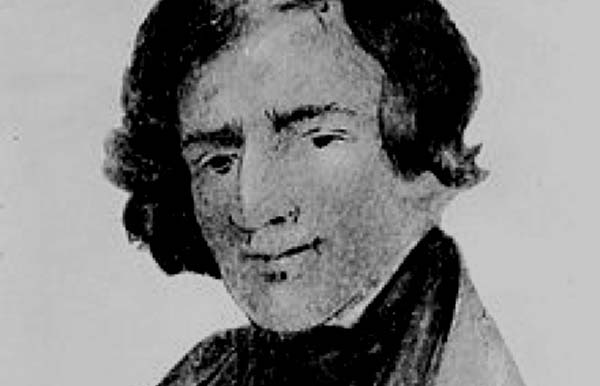
Jedediah Smith, born in New York State, took to the western wilderness as a young man. He made his mark as one of the most respected American pathfinders.
Among the American “mountain men”—frontiersmen, explorers and pathfinders of the early 19th Century—Jedediah Strong Smith was one of the most remarkable. By some accounts, his travels into unmapped western realms were unmatched by his peers.
Smith went west at a young age and died not much later. His short life was filled with more adventures and achievements, however, than most people experience.
Smith the Young Trapper
Jedediah Strong Smith (6 January 1799-circa Spring 1831) was born in New York State. The published journals of Meriwether Lewis and William Clark from their historic overland expedition to the Pacific Northwest coast (1804-06) are said to have inspired him as a teenager to become a wilderness explorer.
By 1822 he was in St. Louis, Missouri, where he answered an advertisement to join a fur trapping “brigade” into the little known West, led by Gen. William Ashley. Ashley recognized Smith’s zeal in roughing the elements and finding furry prizes, and his courage in staving off an Arikara Indian attack. He made Smith, barely 23 years old, a squad leader.
Smith trapped the Rockies for Ashley’s company for four seasons. In 1824-25, he brought down to the trappers’ rendezvous 668 pelts—believed to be a record.
In 1826, Smith and two other rugged entrepreneurs bought out Ashley’s trading operation. For his share of territory, Smith took to the southwestern mountains.
Jedediah Smith’s Achievements
Besides trapping for profit, Smith had a lifelong hankering to explore new country. He is credited as the first European American to cross what is now the State of Utah, north-to-south. He and his men later stumbled into the Mojave Desert and, after 15 torturous days in the sun, entered the region of what is today southern California.
Legally, Smith and his party were foreign invaders of Mexican territory. At Los Angeles, they were not imprisoned but were placed under house arrest. After several months, they were given fresh horses and allowed to leave the territory—on condition they not return.
Smith sought a different route back east, across the Sierra Nevada range. His first attempt was blocked by heavy snow. He and two of his men, leaving 11 others encamped on the Sierra’s western face, then succeeded in crossing the mountains and the broad desert east of it. Assembling another small expedition when they reached the annual rendezvous, he returned to California and rescued the frontiersmen he’d left behind.
Jedediah Smith and the Bear
Smith knew many hardships and life-threatening experiences. Among them were near starvation and thirst. In one of his journals, he recorded: “I have at different times suffered all the extremes of heat and thirst. Hard as it is to bear for successive days the knawings of hunger yet it is light in comparison to the agony of burning thirst. . . .” While crossing a bleak, treeless desert, he and his men on one journey resorted to covering themselves with sand to block the killing sun.
His most dramatic episode, however, occurred during the seasons he trapped for William Ashley in the Rockies. Smith was attacked and mangled by a grizzly bear. Claws ripped off much of his scalp. Surviving the ordeal, Smith stoically ordered one of his men to sew his pate back together, using such crude needle and string as could be found among the party’s supplies.
He afterward wore his hair long to overflow his mutilated left ear.
Smith’s Reserved Personality
Smith carried a well-thumbed Bible on his wilderness epics. He was known to pray and meditate regularly. He refused to drink alcohol or smoke. He was straightforward in speech, never boastful and rarely indulging in humorous banter.
Jedediah Smith was killed by Comanche Indians in 1831. After selling his interest in the fur company and retiring from the mountains, he bought a farm in St. Louis. However, he made one last trip into the southwestern wilderness that spring. Setting out alone from his small party to look for water, he was set upon by hostiles.
Sources:
- Gilbert, Bil, et al. The Trailblazers (“The Old West” Series). Time-Life Books (1973).
- Into the West TV Serial. DreamWorks Television/TNT (2005).
- Laycock, George. The Mountain Men: The Dramatic History and Lore of the First Frontiersmen. Lyons & Burford, Publishers (1996).
- Maguire, James H., et al, editors. A Rendezvous Reader: Tall, Tangled, and True Tales of the Mountain Men, 1805-1850. University of Utah Press (1997).
- McLoughlin, Dennis. Wild & Woolly: An Encyclopedia of the Old West. Doubleday & Company, Inc. (1975).
- The Mountain Men (film). Polyc International B.V. (1979).







